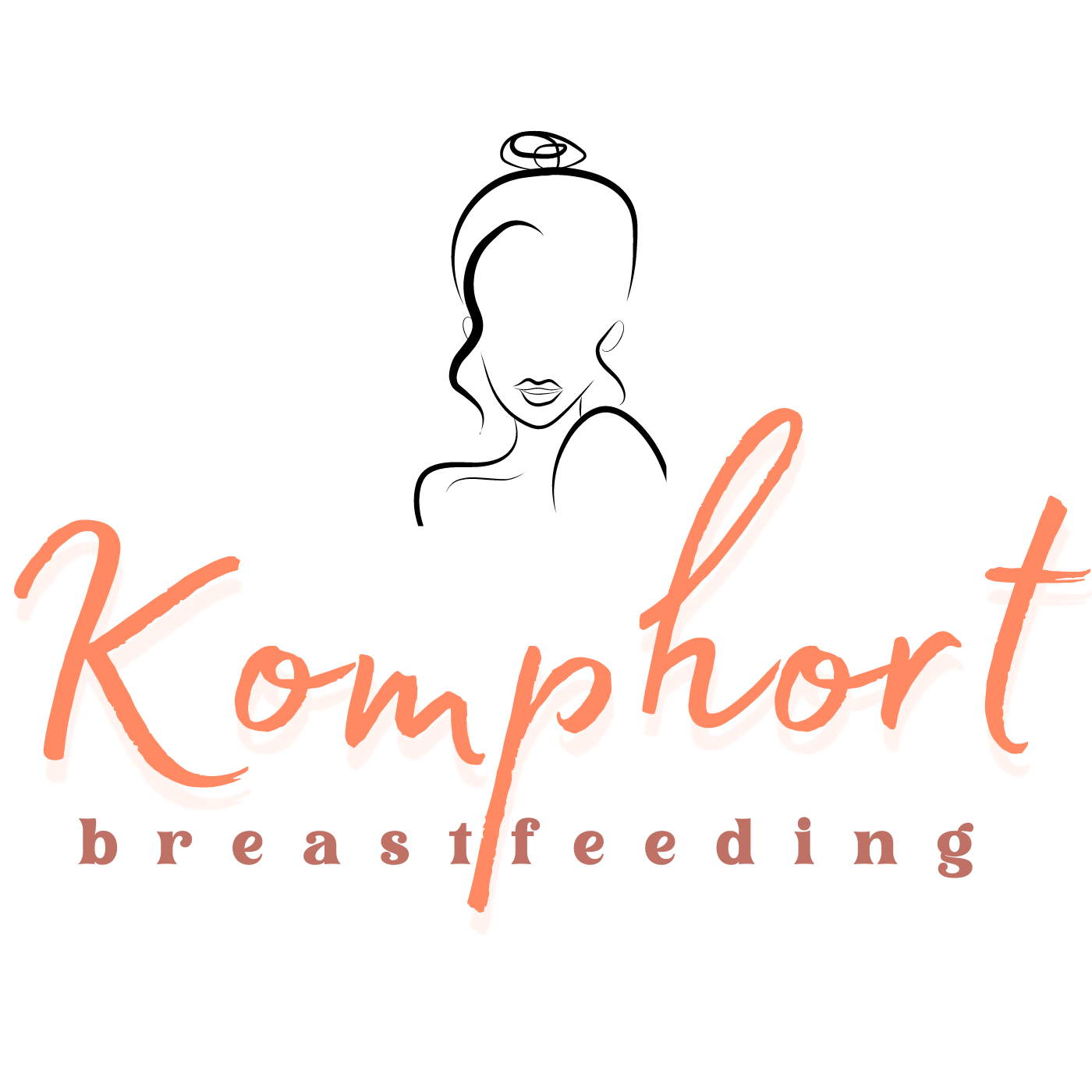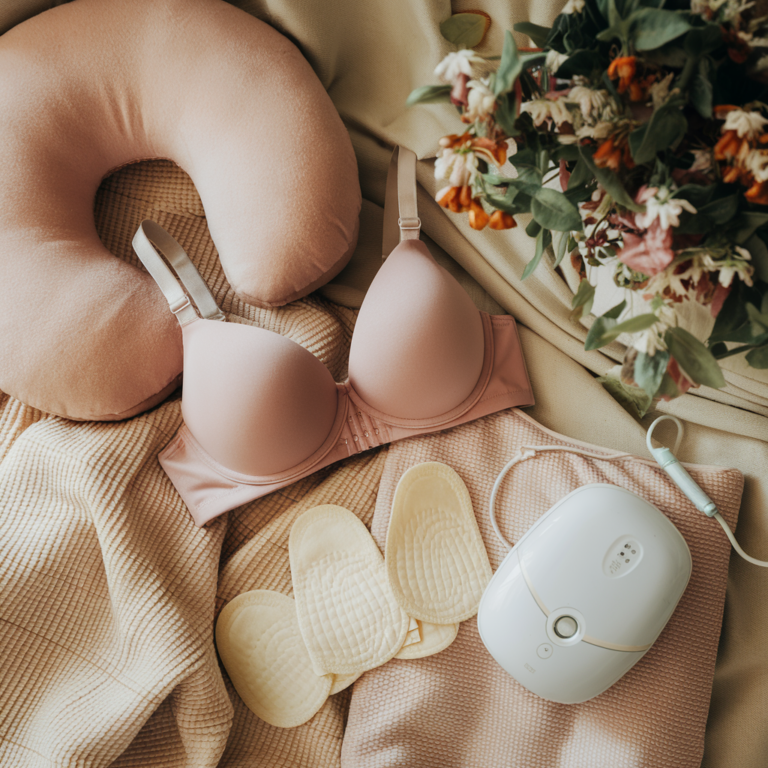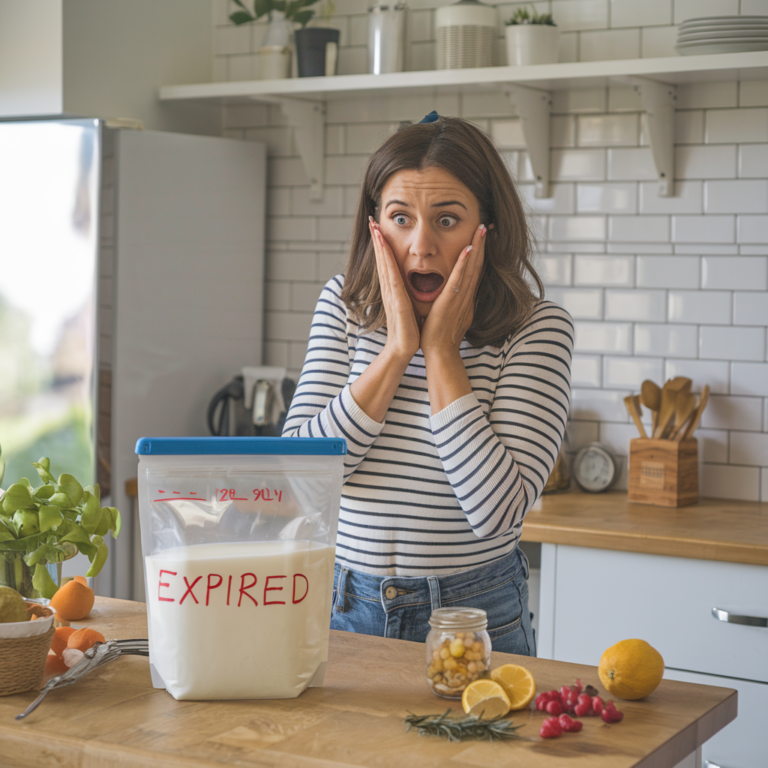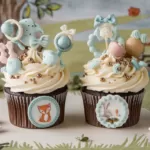Today, let’s chat about something that’s super common and totally okay to talk about: sore nipples during breastfeeding. Yup, we’re going there, and we’re going to make it fun, informative, and most importantly, relatable! I want to call this blog “Breastfeeding Tips Sore Nipples.”
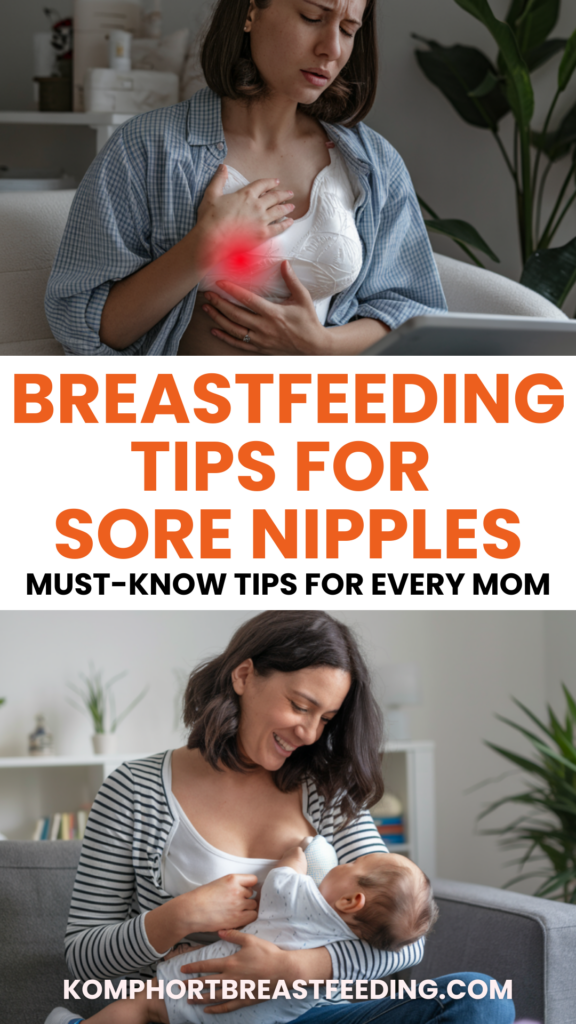
Listen, I get it. You envisioned breastfeeding as this beautiful, serene bonding experience with your little one, and it is! But sometimes, Mother Nature throws us a curveball, and that curveball can feel like tiny little razor blades on your nipples. Ouch! But guess what? You are not alone! As a breastfeeding specialist and nurse, I’ve heard it all, seen it all, and helped countless moms navigate this bumpy road. And guess what else? There’s a whole treasure chest of breastfeeding tips and tricks to help you conquer those sore nipples and get back to enjoying those precious nursing moments.
So, let’s banish those sore nipples for good! Ready? Let’s go!
Is This Normal?! Decoding Nipple Soreness in Breastfeeding
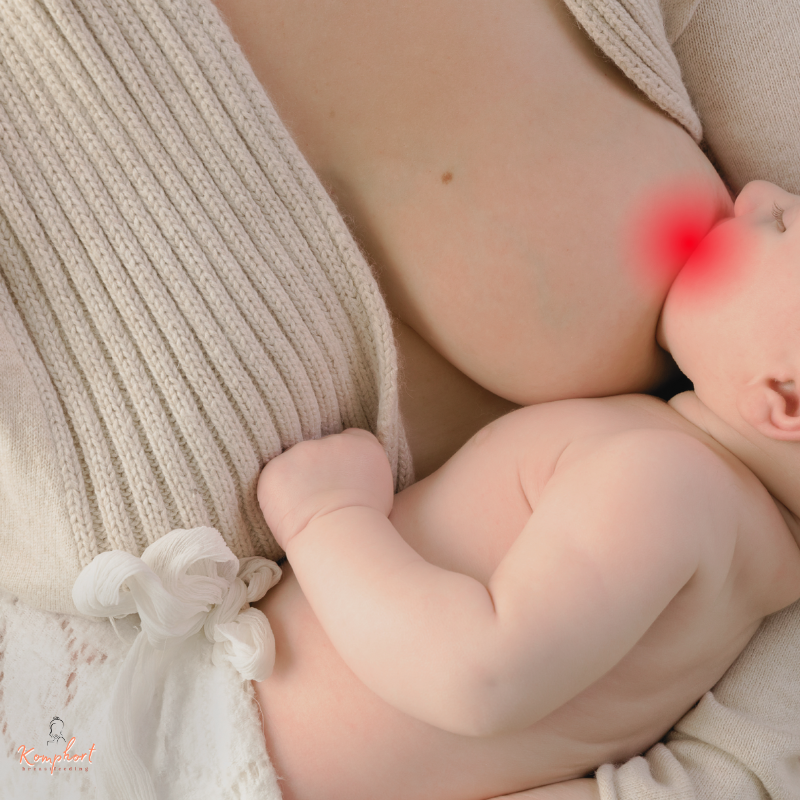
Okay, first things first, let’s address the elephant in the room: Is nipple soreness normal when you start breastfeeding? The short answer is… a little tenderness? Yes. Excruciating, make-you-want-to-cry pain? Nope. There’s a big difference, and it’s important to know the difference.
In the very early days, like the first three to five days after your baby arrives, you might experience some nipple tenderness when your little one latches. Think of it like breaking in new shoes – a little bit of rubbing is expected, but blisters? Absolutely not! This initial tenderness usually feels like a slight sensitivity when your baby latches on. It should be brief and should definitely not last the entire feeding or linger afterwards, as severe pain.
But if you’re feeling more than just a fleeting tenderness – if you’re experiencing sharp, shooting pain, cracked or bleeding nipples, or pain that worsens as the feeding goes on – then something’s up, and it’s time to investigate. This isn’t just something you have to grin and bear! Sore nipples that go beyond mild tenderness are a signal that something needs adjusting, and that’s perfectly okay! Think of it as your body’s way of saying, “Hey, let’s tweak this a little to make it more comfortable for both of us!”
Remember, breastfeeding is meant to be a beautiful and comfortable experience for both you and your baby. If you are feeling persistent or worsening pain, it’s not your fault, and it’s definitely not something you just have to “tough out”. There are solutions, tips, and care strategies that can make a world of difference. We’re going to explore all of those together in this post. So, take a deep breath, mama, you’ve got this, and I’m here to help!
The Latch Lowdown: Mastering the Art of Baby “Mouth-Hugging”

Let’s talk about the magic word when it comes to pain-free breastfeeding: latch. Think of the latch as the foundation of your entire breastfeeding journey. A good latch is like a perfect dance move – when it’s right, it’s smooth, comfortable, and everyone’s happy. A poor latch? Well, that’s when sore nipples can crash the party.
So, what exactly is a “good latch”? Imagine your baby is going to give your breast a big, open-mouthed hug. We’re talking wide open, like they are yawning or getting ready to take a big bite of a delicious apple. This “wide mouth” is key! When your baby latches on, they shouldn’t just be sucking on your nipple – oh no, no, no! They should be taking in a big mouthful of your breast, nipple and areola (that’s the darker area around your nipple).
Think of it like this: your nipple should be way back in your baby’s mouth, nestled comfortably against the soft palate (the roof of their mouth). Their tongue should be underneath, cupped and forward, like a little cushion for your breast. Their lips should be flanged out, like little fish lips, not tucked in.
Signs of a Good Latch
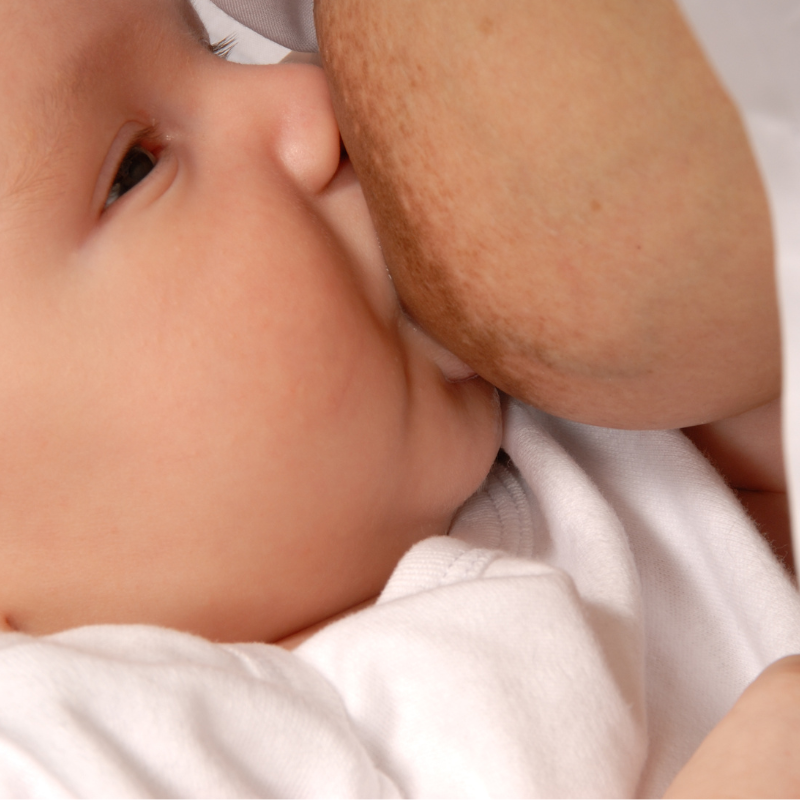
- Wide Open Mouth: mouth is wide open like a yawn when they latch.
- Chin Deep: Baby’s chin is pressed firmly into your breast.
- Nose Free: Baby’s nose is slightly away from your breast, allowing them to breathe easily.
- Asymmetrical Latch: You see more areola above baby’s top lip than below their bottom lip.
- Comfortable Sucking: You hear swallowing sounds, not just sucking or clicking. Breastfeeding should be relatively comfortable, not intensely painful.
- Nipple Shape After Feeding: After the feeding, your nipple should look round and the same shape as it did before, not pinched, flattened, or white.
What to Do If the Latch Isn’t Quite Right

- Reposition, Reposition, Reposition! If it hurts, don’t be a hero! Gently break the suction by slipping a clean finger into the corner of your baby’s mouth and try again. Think of it like starting the dance move over.
- Bring Baby to Breast, Not Breast to Baby: Position your baby close to you, tummy-to-tummy, and bring them to your breast, rather than leaning over and hunching to get your breast to them.
- Aim Your Nipple Up: Tickle your baby’s top lip with your nipple to encourage them to open wide, and then aim your nipple towards the roof of their mouth as they latch.
- Support Your Breast: Use your hand to support your breast, but keep your fingers away from the areola so they don’t get in the way of the latch. A “C-hold” or “U-hold” can be helpful.
Mastering the latch takes a little work and practice, but it’s SO worth it! A good latch is your best defense against sore nipples and sets you up for a much more enjoyable breastfeeding experience. Don’t be afraid to ask for support! Lactation consultants, nurses, and breastfeeding support groups are amazing resources to help you perfect your latch.
Position Power! Finding Your Breastfeeding Sweet Spot
Just like dancing, breastfeeding is all about finding the right position that works for both you and your baby. There’s no one-size-fits-all position, and what works wonders for one mom might feel awkward for another. The key is to experiment and discover what feels most comfortable and supportive for you.
Different positions can also help prevent and relieve sore nipples by changing the pressure points on your breast and ensuring a deeper, more comfortable latch. So, let’s explore some popular breastfeeding positions and see which ones might become your new favorites!
1. Laid-Back Breastfeeding (The Relaxed Mama)

- The Vibe: Think cozy couch cuddles or lounging in bed. This position is all about relaxation for both you and baby!
- How-To: Lean back comfortably in bed, on the couch, or in a recliner, supported by pillows behind your back, head, and arms. Let gravity do some of the work! Your baby rests on your chest, tummy-to-tummy, in any position that feels natural.
- Why It’s Great for Sore Nipples: It encourages a deep, natural latch as baby snuggles in. It’s also super relaxing for mom, which can help with milk flow and overall comfort.
2. Cradle Hold (The Classic)

- The Vibe: The picture-perfect breastfeeding position we often see in movies!
- How-To: Sit upright in a comfortable chair, supporting your back and feet. Cradle your baby in the arm on the same side as the breast you’re nursing from. Baby’s head rests in the crook of your arm, and their body is tummy-to-tummy with yours.
- Why It’s Great for Sore Nipples: It allows for good eye contact and control, but make sure you are truly relaxed and not hunching over, which can lead to tension and a shallower latch. Pillows are your best friend here!
3. Cross-Cradle Hold (The Supportive Variation)
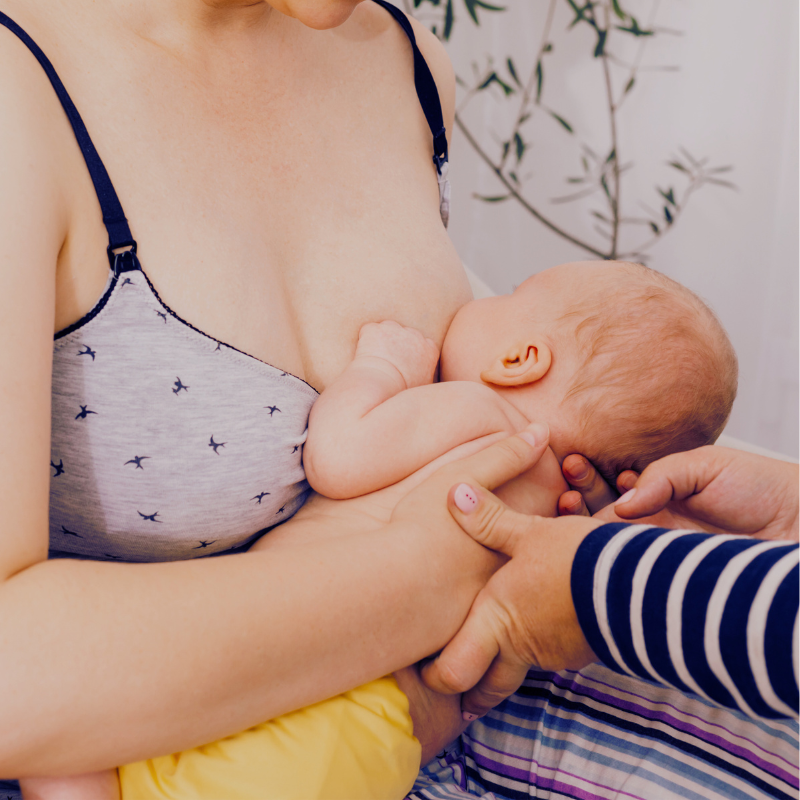
- The Vibe: Similar to the cradle hold, but with extra support to guide the latch.
- How-To: Similar to the cradle hold, but this time, use the arm opposite to the breast you’re nursing from to support your baby. For example, if you’re breastfeeding on the left breast, use your right arm to support baby. Use your hand to gently guide the back of baby’s head and neck towards your breast.
- Why It’s Great for Sore Nipples: Excellent for newborns and babies who need a little extra help latching. Provides more control for guiding baby’s head and ensuring a deep latch.
4. Football Hold (The Underarm Clutch)

- The Vibe: Great for moms who have had a C-section or have larger breasts.
- How-To: Hold your baby at your side, tucked under your arm on the same side you are breastfeeding. Support your baby’s head with your hand, and their back along your forearm. Think of holding a football!
- Why It’s Great for Sore Nipples: Keeps baby’s weight off your tummy if you’ve had a C-section. Also provides good support and can be helpful for babies who struggle with latch or for moms with faster milk flow.
5. Side-Lying Position (The Nighttime Savior)

- The Vibe: Perfect for nighttime feedings and those moments when you just want to relax in bed.
- How-To: Lie on your side, facing your baby, who is also lying on their side facing you. Use pillows behind your back and head for support, and maybe a pillow between your knees.
- Why It’s Great for Sore Nipples: Super comfortable for nighttime feeds and allows you to rest while nursing. Can also be helpful if you are feeling very tender as there is less pressure on your nipples.
Tips for Finding Your Perfect Position:
- Experiment! Try each position and see which ones feel most comfortable and give you the best latch.
- Pillow Power! Use pillows generously to support
- your back, arms, and baby. The goal is to be relaxed and comfortable.
- Listen to Your Body: If a position is causing you pain, stop and adjust. Don’t force it!
- Watch Your Baby: Observe your baby’s cues. Are they relaxed and content during feeding? Are they latching deeply and swallowing effectively?
Finding the right breastfeeding position can make a HUGE difference in preventing and alleviating sore nipples. It’s like finding the right dance partner – once you find your groove, breastfeeding becomes so much smoother and more enjoyable!
Help! My Nipples Are Already Sore! Treatment and Relief Strategies

Okay, so maybe you’re reading this after the sore nipple party has already started. Don’t worry, mama! Relief is on the way! Even if your nipples are feeling like they’ve gone ten rounds in a boxing match, there are lots of things you can do to soothe the pain, promote healing, and get back to comfortable breastfeeding.
Immediate Relief Measures:
| Check the Latch (Again!): | Even if you thought the latch was good, re-evaluate it. A shallow latch is the most common culprit for sore nipples. Go back to the “Latch Lowdown” section and make sure you’re nailing those key points. |
| Vary Nursing Positions: | As we discussed, different positions change the pressure on your nipples. Rotate through different positions at each feeding to give your nipples a break. |
| Start on the Least Sore Side: | Begin each feeding on the breast that is less sore. Your let-down will be triggered on that side, and then you can gently switch baby to the more sore side once the milk is flowing well. This can make the initial latch less intense on the more sensitive nipple. |
| Breast Milk Magic: | Your own breast milk is like liquid gold – not just for baby, but also for your nipples! After each feeding, express a little breast milk and gently pat it onto your nipples and areola. Let it air dry. Breast milk has amazing healing properties and can be incredibly soothing. |
| Lanolin Cream (The Nipple Savior): | High-quality lanolin cream, especially HPA lanolin, is a breastfeeding mama’s best friend! Apply a small, pea-sized amount to your nipples after each feeding. It creates a protective barrier, keeps your nipples moisturized, and promotes healing. You don’t need to wash it off before nursing, and it’s safe for baby to ingest. |
| Cool Compresses (Chill Out, Nipples!): | Apply cool compresses or chilled gel pads to your nipples between feedings to help reduce swelling and pain. Some moms find relief with chilled cabbage leaves too (yes, really!). Make sure to remove cabbage leaves before feeding and cleanse the area gently. |
| Air Time (Let Them Breathe!): | Give your nipples some air time! After feedings, try to go bra-less or wear a loose-fitting bra. Air exposure can help with healing. You can even use breast shells with large openings inside your bra to protect your nipples from rubbing against your clothing and allow for air circulation. |
| Pain Relief (When You Need Extra Help): | If the pain is intense, you can take over-the-counter pain relievers like ibuprofen or acetaminophen as directed by your doctor. These can help take the edge off and make breastfeeding more manageable while you work on improving the latch and healing your nipples. |
Things to Avoid (Nipple No-Nos!)

- Harsh Soaps and Cleansers: Avoid washing your nipples with soap, shampoo, or anything that can dry them out. Rinsing with plain water in the shower is all you need.
- Rubbing and Scrubbing: Be gentle with your nipples! Pat them dry after showering or bathing, don’t rub them vigorously.
- Tight Bras: Wear comfortable, supportive nursing bras that aren’t too tight and don’t put pressure on your nipples. Make sure to rinse your bras thoroughly after washing to remove any detergent residue.
- Nipple Drying with Hair Dryers or Sun Lamps: These old-fashioned remedies are not recommended anymore. They can actually dry out your nipples further and cause more damage.
When to Seek Professional Support
- Persistent or Worsening Pain: If your nipple pain is not improving within a few days, or if it’s getting worse despite trying these tips, reach out for help.
- Cracked or Bleeding Nipples: These can be a sign of a more significant latch issue or even an infection.
- Signs of Infection: Look out for increased redness, swelling, warmth, pus-like discharge from your nipples, or fever. These could indicate a bacterial or yeast infection (like thrush), which needs medical treatment.
- Baby Not Gaining Weight Well: If you’re concerned that your baby isn’t getting enough breast milk because of pain or latch difficulties, consult with a lactation consultant or your pediatrician.
Remember, seeking help is a sign of strength, mama, not weakness! Lactation consultants, breastfeeding support groups like La Leche League, and your healthcare provider are all amazing resources to help you overcome breastfeeding challenges, including sore nipples. Don’t hesitate to read up on resources, watch video tutorials on latch and positions, and work with a professional to get personalized tips and care. You don’t have to go through this alone!
Beyond Latch and Position: Other Potential Culprits for Sore Nipples
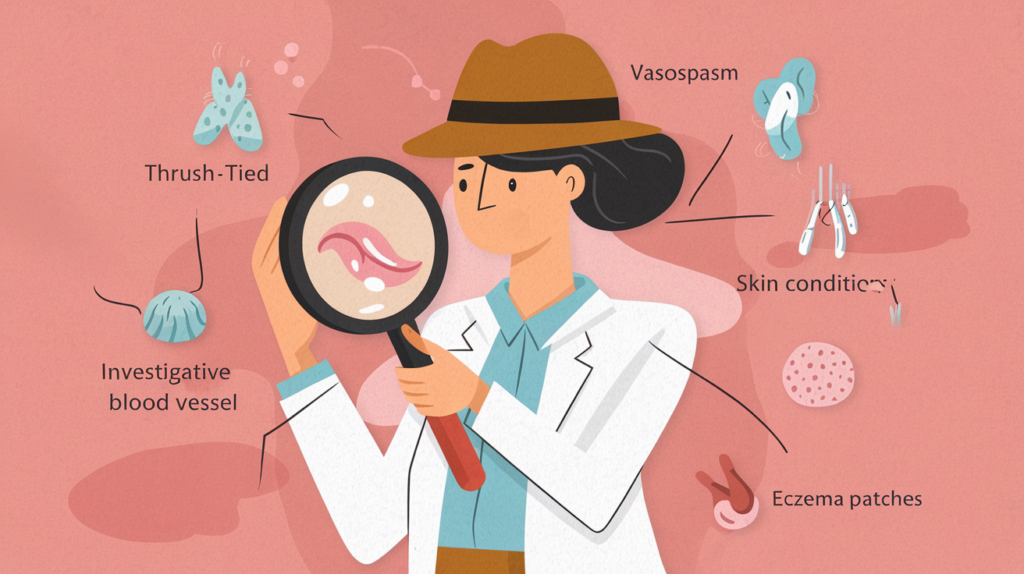
While a poor latch is the most common cause of sore nipples, sometimes there are other sneaky culprits at play. Let’s shed some light on these less common, but equally important, factors that can contribute to nipple pain.
1. Tongue-Tie or Lip-Tie
- What it is: Sometimes, babies are born with a tight frenulum (the band of tissue under the tongue) or lip frenulum (under the upper lip). This can restrict the tongue or lip movement, making it difficult for baby to latch deeply and effectively.
- How it can cause sore nipples: A tongue-tie or lip-tie can lead to a shallow latch, as baby may not be able to extend their tongue properly or flange their lips out fully, leading to friction and nipple irritation.
- What to do: If you suspect tongue-tie or lip-tie, talk to your pediatrician or a lactation consultant. They can assess your baby and recommend treatment if needed, which may involve a simple procedure to release the frenulum.
2. Thrush (Yeast Infection)
- What it is: Thrush is a yeast infection that can affect both your nipples and your baby’s mouth.
- How it can cause sore nipples: Thrush pain is often described as burning or shooting pain in the nipples, that can persist even after feedings. Your nipples may appear pink, shiny, or flaky, and you might experience itching. Your baby may also have white patches in their mouth (on the tongue or cheeks) or diaper rash.
- What to do: If you suspect thrush, contact your doctor and your baby’s pediatrician. Thrush requires antifungal treatment for both you and your baby to prevent re-infection. Lanolin cream and breast milk are not recommended for treating thrush, as yeast thrives in moist environments.
3. Vasospasm
- What it is: Vasospasm is a condition where the blood vessels in your nipples spasm or constrict after breastfeeding, leading to reduced blood flow.
- How it can cause sore nipples: Vasospasm pain is often described as sharp, shooting pain in the nipples after feeding, which may be accompanied by a color change in the nipples – turning white or bluish, then red as blood flow returns.
- What to do: Keep your nipples warm after feedings. Warm compresses or a warm washcloth can help. Avoid caffeine and nicotine, as these can worsen vasospasm. Talk to your doctor, as certain medications or supplements (like calcium and magnesium) may be helpful.
4. Eczema or Other Skin Conditions
- What it is: Pre-existing skin conditions like eczema or dermatitis can make your nipples more sensitive and prone to irritation during breastfeeding.
- How it can cause sore nipples: These conditions can cause dry, itchy, and inflamed skin on your nipples, making them more susceptible to soreness and cracking with breastfeeding.
- What to do: Continue your usual skincare routine for your condition, but ensure any creams or ointments are safe for baby. Talk to your dermatologist and lactation consultant for guidance on managing your skin condition while breastfeeding.
5. Pumping Issues
- What it is: Improper breast pump flange size or suction settings can also lead to nipple soreness, even if your baby latches well at the breast.
- How it can cause sore nipples: Flanges that are too small can rub and irritate your nipples, while excessive suction can cause pain and damage.
- What to do: Make sure you are using the correct flange size for your breast pump. Most manufacturers have sizing guides. Start with the lowest suction setting and gradually increase it only to the point of comfortable suction. If pumping is causing pain, stop and re-evaluate your pump settings and flange size.
Important Note: It’s possible to have more than one of these factors contributing to your sore nipples at the same time! This is why seeking professional help from a lactation consultant or healthcare provider is so valuable – they can help you identify all the potential causes and create a plan to address them effectively.
Self-Care Supercharge: Nipple Love and Prevention

Let’s shift gears from treatment to prevention and self-care! Taking good care of your nipples is not just about healing soreness, it’s about setting yourself up for a comfortable and joyful breastfeeding journey right from the start. Think of it as giving your nipples a little extra TLC!
Daily Nipple Care Habits
- Gentle Cleansing: As we mentioned earlier, plain water is all you need to cleanse your breasts and nipples in the shower or bath. Avoid soaps, shampoos, or body washes directly on your nipples, as these can strip away natural oils and cause dryness.
- Air Drying is Your Friend: After showering or nursing, gently pat your nipples dry and allow them to air dry completely if possible. Moisture can contribute to yeast infections.
- Comfortable Bras: Wear nursing bras that are comfortable, well-fitting, and made from breathable materials like cotton. Avoid underwire bras that can put pressure on your milk ducts. Make sure your bras are not too tight and that you rinse them thoroughly after washing to remove detergent residue.
- Avoid Irritants: Be mindful of products you use near your breasts. Perfumes, deodorants, hairspray, and powders can irritate your nipples. Apply these products away from your breast area.
- Stay Hydrated and Eat Well: Good overall health contributes to healthy skin. Drink plenty of water and eat a balanced diet to keep your skin nourished and resilient.
Pregnancy Prep (Yes, Even Before Baby Arrives!)
- No Need to “Toughen Up” Nipples: Forget the old advice about rubbing or “toughening up” your nipples during pregnancy. This is outdated and not necessary! Your nipples are perfectly designed for breastfeeding as they are.
- Focus on Education: Instead of nipple prep, focus on educating yourself about breastfeeding, latch, and positions. Attend breastfeeding classes, read books, and connect with breastfeeding support groups. Knowledge is power!
Early Days Breastfeeding Care
- Recognize Hunger Cues Early: Learn to recognize your baby’s early hunger cues (like rooting, bringing hands to mouth, turning head side-to-side) and offer the breast before they become frantically hungry and cry. A calmer baby is more likely to latch well.
- Frequent Nursing (On Demand): Breastfeed your baby frequently, on demand, especially in the early days. Frequent nursing helps establish your milk supply and also helps your baby practice and perfect their latch.
- Proper Latch from Day One: Focus on achieving a good latch from the very first feeding. Don’t hesitate to ask for help from nurses or lactation consultants in the hospital or birthing center to ensure you get off to a good start.
By incorporating these self-care practices into your routine, you’re not only treating sore nipples, but also proactively building a foundation for comfortable and joyful breastfeeding for the long haul. Remember, consistent and gentle care goes a long way in keeping your nipples happy and healthy!
Breastfeeding Myths Debunked: Sore Nipples Edition!
Let’s tackle some common myths and misconceptions about sore nipples during breastfeeding. Because let’s be honest, there’s a lot of misinformation out there, and it can make navigating this journey even more confusing and stressful. Time to set the record straight!

Myth 1: Sore Nipples Are Just Part of Breastfeeding, You Just Have to Get Used to It.
- Truth: While some initial tenderness is normal, severe or persistent pain is not something you have to endure. Sore nipples beyond mild tenderness are a sign that something needs to be addressed, usually related to the latch. Breastfeeding is meant to be comfortable!
Myth 2: You Should Limit Nursing Time to Prevent Sore Nipples.
- Truth: Limiting nursing time can actually worsen sore nipples and can also impact your milk supply and baby’s intake. Frequent, effective milk removal is important for both milk supply and baby’s nutrition. Focus on improving the latch and position instead of limiting feeding duration.
Myth 3: “Tough Nipples” Are the Key to Pain-Free Breastfeeding.
- Truth: Nipple toughness has very little to do with breastfeeding comfort. The sensitivity of your nipples is normal and healthy! The key is proper latch and positioning, not “tough” nipples.
Myth 4: If You Have Sore Nipples, You Should Stop Breastfeeding and Pump Instead.
- Truth: Pumping can be a helpful tool, but switching to exclusive pumping because of sore nipples is not always necessary and may not even solve the problem, as pumping can also cause nipple soreness if done incorrectly. With proper guidance and care, most moms can overcome sore nipples and continue to breastfeed successfully.
Myth 5: Nipple Cream is a Magical Cure for Sore Nipples.
- Truth: Lanolin cream and breast milk are wonderful for soothing and healing sore nipples, but they are not a magical cure if the underlying cause, like a poor latch, is not addressed. Lanolin cream is a helpful supportive measure, not a solution in itself.
Myth 6: If You Have Sore Nipples, It Means You’re Not Meant to Breastfeed.
- Truth: Absolutely not true! Sore nipples are a common challenge, but they do not mean you are not “meant” to breastfeed. With the right tips, support, and care, almost all moms can successfully breastfeed their babies, even if they experience sore nipples initially.
Let’s replace these myths with truth and empowerment! Breastfeeding is a learned skill for both you and your baby. Challenges are normal, and solutions are available. Don’t let misinformation discourage you! You are strong, capable, and you’ve got this, mama!
Read more: Breastfeeding with Mastitis: Guide & Relief Tips
Conclusion
And there you have it, mamas! Your ultimate guide to conquering sore nipples and rocking your breastfeeding journey! Remember, sore nipples are common, but they are not forever. With the right knowledge, tips, care, and support, you can absolutely overcome this challenge and enjoy the beautiful, rewarding experience of breastfeeding your little one.

You are doing an amazing job, mama! Give yourself grace, be patient with yourself and your baby, and never hesitate to ask for help. You’ve got this! And I’m here cheering you on every step of the way.
Happy Breastfeeding!
Frequently Asked Questions:
What is the fastest way to heal sore nipples?
To heal sore nipples quickly, apply a few drops of your own breast milk, as it has natural healing properties. You can also use a small, pea-sized amount of ultrapure lanolin, gently patting it onto the nipple and areola without rubbing.
How do I stop my nipples from hurting when I breastfeed?
To ease nipple pain while breastfeeding, try these tips:
- Let a few drops of breast milk dry on your nipples for its natural healing benefits.
- Air-dry your nipples after each feeding.
- Use breast shields inside your bra to reduce friction.
- Apply a purified lanolin-based nipple cream for added relief.
What should I do to treat my sore nipples?
To soothe sore nipples, try these remedies:
- Apply lanolin cream or your own breast milk to keep them hydrated.
- Wear loose-fitting bras and clothing for comfort.
- Change nursing pads frequently to keep the area clean and dry.
- Use mild soap and water when washing your breasts.
- Switch nursing positions to reduce pressure on sore spots.
How to get a good latch with sore nipples?
To get a good latch with sore nipples:
- Support your breast with your thumb and fingers, keeping them well back from the areola.
- Avoid holding too close to the nipple, as this can affect your baby’s latch.
- Gently shape your breast to match the oval of your baby’s mouth for a deeper, more comfortable latch.
How long until nipples stop hurting?
Nipple pain is common in the early days of breastfeeding as your body adjusts. It usually improves within a week. However, if soreness continues throughout feedings or lasts beyond a week, it may indicate an issue that should be addressed.
Expert Motherhood Tips Await – Explore Now!

Breastfeeding is a journey, and I’m here to support you every step of the way. If you’re looking for even more practical advice, real-life tips, and encouragement, be sure to check out my YouTube channel!
Whether you’re tackling common breastfeeding challenges or just need a confidence boost, you’ll find a wealth of resources to help you thrive on this amazing journey. Click here.
